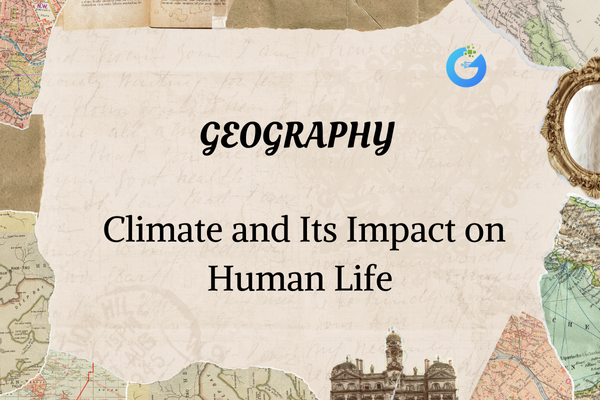Introduction:
Have you ever wondered why people in some places wear thick coats while others wear shorts all year round? Why do houses in deserts look different from those in snowy mountains? The answer lies in climate—the long-term pattern of weather in a region.
Climate shapes our food, clothes, homes, and even our traditions. It’s like nature’s background setting that influences everything we do. Unlike weather, which changes daily, climate is like the personality of a place, staying steady over many years. It gives identity to regions—whether tropical, icy, or moderate—and helps us decide how we live.
expert-led Geography classes – visit our website to learn more
Who studies climate?
The people who study climate are called climatologists. They spend years researching long-term weather patterns using tools like satellites, computer models, and even ancient ice from glaciers. This data helps them discover how Earth’s climate has changed over centuries—and how it’s still changing.
Climatologists help us understand big global issues like global warming, rising sea levels, droughts, and floods. Their work is vital for planning farming methods, building safer cities, and protecting human health. In today’s time, as climate change affects more parts of the world, their research is more important than ever.
Why is climate important?
Climate is the silent guide for life on Earth. It may not shout like a thunderstorm, but it quietly shapes every part of our existence. Here’s why it matters so much:
- Food and Farming: Climate decides what crops grow best where. For example, rice needs lots of water and warm temperatures, so it grows well in wet areas like Kerala. Wheat, on the other hand, prefers cooler, drier regions.
- Homes and Lifestyle: People build homes that suit their climate. In hot regions, houses often have flat roofs and are made of mud or clay to keep interiors cool. In snowy areas, houses have sloped roofs to prevent snow buildup.
- Clothing: The weather around us affects what we wear. You wouldn’t wear a thick wool coat in a desert, just as you wouldn’t wear shorts in Antarctica. Local climate helps people choose the right fabrics and styles.
- Culture and Traditions: Many festivals and celebrations are tied to climate. Harvest festivals like Pongal or Baisakhi happen during seasonal changes, and even weddings are often scheduled based on local climate conditions.
- Health: Climate affects health too. Diseases like malaria spread faster in hot, humid areas where mosquitoes thrive. In contrast, cold places might see more flu cases.
When do we study climate?
Climatologists don’t just look at the weather from last week—they study patterns that stretch back decades. Usually, they observe data over at least 30 years to understand what a region’s climate truly is. This helps find stable weather trends, like India’s monsoon or the dry summers of Spain.
Tracking long-term changes also helps us predict future dangers. For instance, if global temperatures continue to rise, some places may become too hot to farm or live comfortably. By studying the past and present, scientists help us prepare for the future.
Where does climate vary?
Climate doesn’t stay the same everywhere—it changes dramatically across the globe:
- Tropical regions near the equator are hot and wet. These places have dense forests, heavy rains, and rich biodiversity.
- Deserts are hot and dry with little rainfall. Life here has adapted to survive with very little water.
- Temperate zones experience all four seasons—spring, summer, autumn, and winter—each bringing different temperatures and landscapes.
- Polar areas like Antarctica are icy, cold, and almost barren. These regions have long winters and very short summers.
Even a single country can have many climates. India is a great example—it has snowy mountains in the north, dry deserts in the west, and tropical beaches in the south.
How does climate impact human life?
Climate shapes human life in big and small ways, often without us even realizing it.
- Agriculture: Farmers rely on predictable rainfall and temperature. Too much or too little can ruin crops and lead to food shortages.
- Disasters: A warming climate brings more storms, floods, and wildfires. These disasters damage homes and infrastructure, putting millions at risk.
- Health: Heatwaves and extreme cold cause illness and even death. Air quality can also worsen with changing climate, causing breathing problems.
- Economy: Many industries depend on stable climates. Tourism in hill stations, fishing in coastal areas, and skiing in snowy mountains all rely on predictable weather.
- Migration: Some people are forced to move because their homeland becomes too hot, dry, or flood-prone. Climate migration is becoming a growing global challenge.
Core Concepts:
| Term | Explanation |
| Weather | Day-to-day atmospheric conditions like rain, sun, or wind. |
| Climate | The average weather of a place over a long period, usually 30 years or more. |
| Climate Zones | Areas of Earth with similar climates (e.g., tropical, desert, polar). |
| Climate Change | A long-term change in Earth’s climate, often caused by human activity. |
| Global Warming | A specific type of climate change—rising temperatures due to greenhouse gases. |
FAQ:
Q1: What’s the difference between weather and climate?
A: Weather changes daily—sunny one day, rainy the next. Climate is the long-term average of such patterns.
Q2: Can humans change the climate?
A: Yes! Burning fossil fuels like coal and petrol releases greenhouse gases, causing global warming.
Q3: How can we protect ourselves from climate change?
A: Use clean energy, reduce pollution, plant trees, and conserve water. Small steps make a big difference.
Fun Facts:
- The hottest temperature ever recorded on Earth was 56.7°C in Death Valley, USA!
- Antarctica holds the record for the coldest place at a bone-chilling -89°C.
- The central USA is called “Tornado Alley” because it gets more tornadoes than any other place.
- Mawsynram in India receives the most rainfall on Earth—around 11,871 mm each year!
Conclusion:
Climate is much more than hot or cold days. It’s the powerful, invisible force that guides what we eat, wear, build, and believe in. From traditional clothing to national festivals, everything is linked to climate. That’s why understanding it is so important.
Today, with global warming threatening sea levels and farming patterns, learning about climate is not just educational—it’s urgent. Every small action, like saving electricity or using public transport, helps protect our Earth’s balance. Together, we can build a future where both nature and people thrive.








